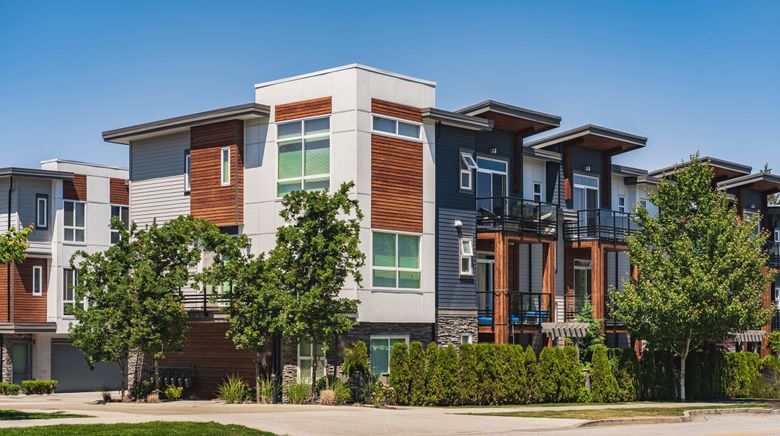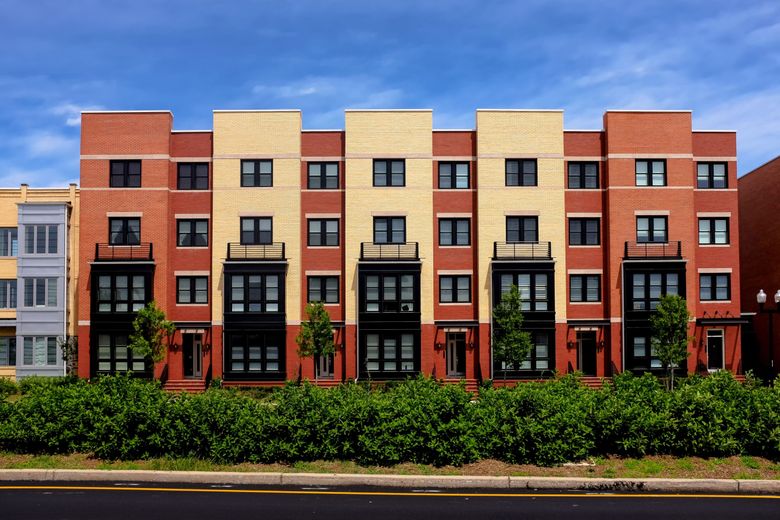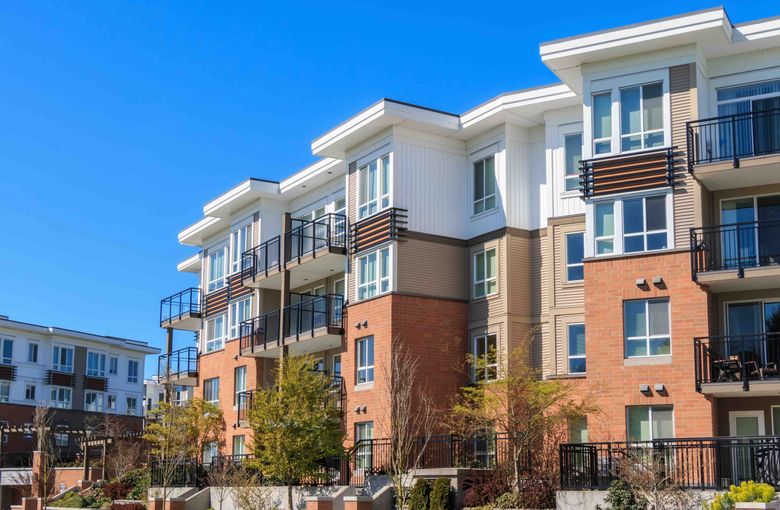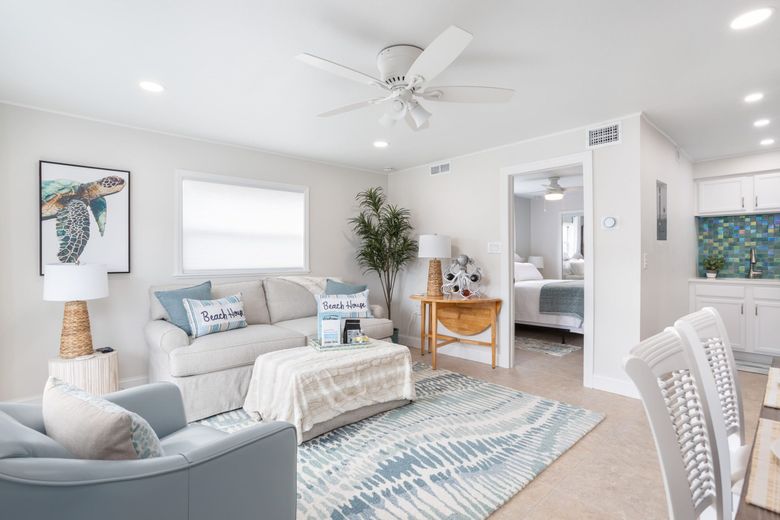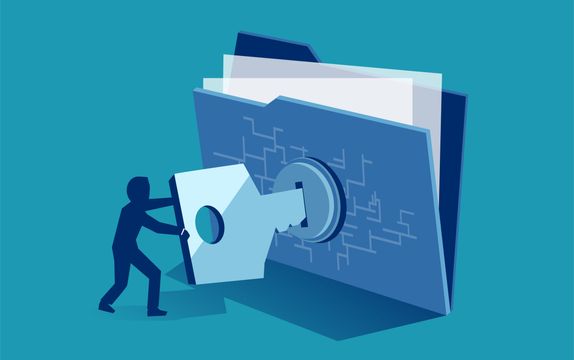Disclaimer: The guide to multifamily operating expenses presented here serves solely for informational purposes. Please refrain from interpreting any of this information as legal, tax, investment, financial, or any other form of advice. Our website does not contain any form of solicitation, recommendation, endorsement, or offers, whether from Swiftlane or any third-party service provider. It is essential to note that Swiftlane is not a financial advisor. To make well-informed decisions, it is advisable to consult a licensed professional for independent legal, financial, taxation, or any other type of guidance.
Introduction
In the world of real estate investing, how you handle the day-to-day costs of running a multifamily property can make a big difference in your success. Imagine you’ve just invested in a nice apartment building with the potential to make money without much effort. You’re excited about the idea of making money from it. But, behind the shiny exterior of the property, there are a lot of complicated financial details to deal with. That’s where our guide to multifamily operating expenses comes in. It’s here to help you understand these financial details and show you how to succeed in this type of real estate.
Our guide is here to help you become a pro at managing multifamily operating expenses. We’ve gathered lots of useful information, strategies, and tips to give you the knowledge you need to handle this challenging aspect of real estate. Whether you’re just starting out or you’re an experienced investor, our guide will help you succeed in the world of apartment buildings.
So, whether you’re an experienced investor looking to improve your skills or a newcomer excited about making money with apartment buildings, this comprehensive guide is here to help. Let’s explore the details of managing these expenses and set the stage for your success in this exciting field.
Key Takeaways
- Multifamily operating expenses encompass a wide range of costs, including property management, maintenance, utilities, and more. It’s crucial for property owners and investors to have a comprehensive understanding of these expenses to effectively manage their multifamily properties.
- Controlling and optimizing operating expenses is essential for maximizing profitability in multifamily real estate investments. Strategies such as proactive maintenance, energy-efficient upgrades, and careful vendor selection can help reduce costs and increase returns.
- Accurate tracking and analysis of operating expenses through financial statements and property management software are vital for making informed decisions and assessing the financial health of multifamily properties. Property owners should regularly review their expenses to identify areas for improvement and cost-saving opportunities.
Suggested Posts
- The Ultimate Guide To Conducting Effective Resident Surveys
- Apartment Turnover | A Landlord’s Comprehensive Guide
- Package Theft Prevention | Your Guide To Home Security Upgrades
- How To Set Up A Package Room In 2023?
- How To Choose The Right Condo Property Management Company?
Understanding Multifamily Operating Expenses
- Before we get into the nitty-gritty details of multifamily operating expenses, it’s important to know what we’re talking about.
- Operating expenses, in this context, are all the different costs involved in running and maintaining an apartment complex.
- This includes things like paying for property management, utilities, repairs, and insurance.
- These expenses are like the financial lifeblood of your investment. They come and go, but they shape how much money you make.
Importance of Managing Operating Expenses
- Managing these expenses well is incredibly important.
- They directly affect how much money you make from your property, how much it’s worth, and whether your investment succeeds or fails.
- Real estate markets can be unpredictable, so knowing how to handle operating expenses is not just smart; it’s a crucial skill.
- Here’s why it matters: If you handle your expenses well, it can make your property more profitable, help you keep tenants, and make sure you’re financially stable.
- But if you don’t pay attention to these expenses, it can eat into your profits, drive tenants away, and leave your investment vulnerable to unexpected financial problems.
Types of Multifamily Operating Expenses
Multifamily properties, such as apartment complexes and condominiums, come with a range of operating expenses that property owners and managers must carefully manage to ensure the financial viability and profitability of their investments.
Things to keep in mind:
- These operating expenses can be categorized into several key areas, including property management costs, utilities, maintenance and repairs, insurance, property taxes, marketing and advertising, and administrative costs.
- Additionally, it’s important to understand the distinction between variable and fixed expenses, as well as capital expenses versus operating expenses.
- In this comprehensive guide, we will delve into each of these aspects to provide a thorough understanding of multifamily operating expenses.
Overview of Common Operating Expenses
Property Management Costs
- Property management costs are one of the most significant expenses for multifamily property owners.
- These costs encompass the fees paid to property management companies or personnel responsible for day-to-day operations, including tenant screening, rent collection, property maintenance, and tenant relations.
- Property management fees typically range from 4% to 10% of gross rental income, depending on the level of services provided.
Utilities
- Utilities are a critical operating expense for multifamily properties.
- This category includes expenses related to water, electricity, gas, sewage, and trash removal.
- Utility costs can vary widely based on property size, location, and energy efficiency measures in place.
- Property owners may choose to either include utilities in the rent or bill tenants separately.
Maintenance and Repairs
- Maintenance and repair expenses are essential for maintaining the property’s condition and ensuring tenant satisfaction.
- These costs cover routine maintenance like landscaping, cleaning common areas, and servicing HVAC systems, as well as unexpected repairs such as plumbing issues or roof damage.
- Property owners should budget for both ongoing maintenance and emergency repairs.
Insurance
- Insurance is crucial to protect multifamily properties from potential risks and liabilities.
- Property owners typically need two types of insurance: property insurance to cover physical damage and liability insurance to protect against legal claims by tenants or third parties.
- Insurance premiums can vary based on property type, location, and coverage limits.
Property Taxes
- Property taxes are imposed by local governments and represent a significant portion of operating expenses.
- The tax rate and assessment value are determined by the property’s location and assessed value.
- Property owners must pay property taxes annually, semi-annually, or quarterly, depending on local regulations.
Marketing and Advertising
- To attract and retain tenants, property owners allocate funds for marketing and advertising expenses.
- This includes creating and distributing rental listings, organizing open houses, and using various advertising channels.
- Effective marketing can help minimize vacancies and maximize rental income.
Administrative Costs
- Administrative costs involve expenses related to property management offices, accounting software, legal fees, and administrative staff salaries.
- These costs are essential for efficient property management and compliance with local regulations.
- Administrative expenses can vary based on the property’s size and complexity.
Variable vs. Fixed Expenses
Understanding the distinction between variable and fixed expenses is crucial for budgeting and financial planning in multifamily properties.
Variable Expenses
- Variable expenses fluctuate with occupancy levels and tenant usage.
- Examples of variable expenses include utilities, maintenance and repair costs, and marketing expenses.
- These expenses can be challenging to predict and can significantly impact cash flow when occupancy rates change.
Fixed Expenses
- Fixed expenses remain relatively stable regardless of occupancy levels.
- Examples of fixed expenses include property taxes, insurance premiums, and property management fees.
- Property owners can anticipate these costs and plan their budgets accordingly.
Capital Expenses vs. Operating Expenses
It’s also important to differentiate between capital expenses and operating expenses in multifamily properties.
Capital Expenses
- Capital expenses, often referred to as “capex,” involve significant investments in the property that provide long-term benefits and increase its value.
- Examples include roof replacements, HVAC system upgrades, and major renovations.
- Capital expenses are typically capitalized on the balance sheet and depreciated over time.
Operating Expenses
- Operating expenses, on the other hand, are the day-to-day costs associated with running the property.
- These expenses are necessary to maintain the property’s current condition and support its ongoing operations.
- Examples include property management fees, utilities, and routine maintenance costs.
Multifamily Operating Expenses: A Beginner’s Rule of Thumb
Investing in multifamily real estate can be an attractive venture, offering a steady stream of rental income and the potential for long-term appreciation. However, understanding and managing multifamily operating expenses is crucial for success in this field. In this guide, we will delve into the fundamental aspects of managing multifamily operating expenses for beginners.
Expense Ratio
The expense ratio is a key metric when evaluating multifamily properties. It refers to the percentage of a property’s gross income that is consumed by operating expenses. Understanding and monitoring the expense ratio is vital for assessing the property’s profitability and sustainability. Here’s how to calculate it:
Expense Ratio (%) = (Total Operating Expenses / Gross Rental Income) x 100
- Benchmarking: To determine whether a property’s expense ratio is in line with industry standards, research the average expense ratios for similar properties in the area. Typically, well-managed multifamily properties aim for an expense ratio between 35% to 50% of gross rental income.
- Expense Categories: Break down operating expenses into categories such as property management, maintenance, utilities, property taxes, insurance, and more. This breakdown will help you identify areas where cost savings may be possible.
- Expense Control: Implement cost-effective measures to control expenses without compromising the property’s quality and tenant satisfaction. Negotiate vendor contracts, conduct regular maintenance, and invest in energy-efficient upgrades.
Strategy
Developing a clear strategy for managing multifamily operating expenses is essential for long-term success. Here are some strategic considerations:
- Financial Planning: Create a comprehensive financial plan that outlines your short-term and long-term goals for the property. This plan should include budgeting for operating expenses, capital expenditures, and reserves for unexpected costs.
- Value-Add Opportunities: Look for value-add opportunities that can increase rental income or reduce expenses. This could include renovating units, adding amenities, or implementing cost-saving technologies like smart thermostats or energy-efficient lighting.
- Rent Increases: Regularly review and adjust rents to keep up with market rates. Gradual rent increases can help offset rising operating expenses and improve cash flow.
- Professional Property Management: Consider hiring a professional property management company. Their expertise can lead to cost savings, efficient operations, and better tenant retention.
Third-Party Expertise
Navigating multifamily operating expenses can be complex, especially for beginners. Seeking third-party expertise can provide valuable insights and guidance:
- Property Management: A reputable property management company can handle day-to-day operations, rent collection, maintenance, and tenant relations, freeing up your time and ensuring efficient expense management.
- Financial Advisors: Consult financial advisors who specialize in real estate investments. They can help you create a financial plan, optimize tax strategies, and ensure your investment aligns with your overall financial goals.
- Legal and Tax Professionals: Multifamily properties often have complex legal and tax considerations. Legal and tax professionals can provide advice on structuring your investment, compliance with regulations, and minimizing tax liabilities.
Investigation
Thorough investigation and due diligence are essential before acquiring a multifamily property:
- Property Inspection: Conduct a comprehensive property inspection to identify any potential maintenance or repair issues. This helps you estimate future operating expenses accurately.
- Financial Analysis: Review historical financial statements and rent rolls. Analyze the property’s income and expense history to identify any trends or irregularities.
- Market Analysis: Research the local rental market to understand demand, competition, and rental rates. This analysis will help you make informed decisions about rent pricing and property improvements.
- Review Lease Agreements: Carefully review existing lease agreements to understand tenant obligations and any upcoming lease renewals or terminations. This will impact your rental income and expense projections.
Property Management Costs
Property management involves a range of activities aimed at maintaining and maximizing the value of real estate assets while ensuring the satisfaction of tenants or residents. Property management costs can vary significantly depending on various factors, including property type, size, location, and the specific services provided. In this detailed discussion, we will explore the key components of property management costs:
Salary and Benefits of Property Managers
Property Manager’s Role
Property managers play a pivotal role in overseeing the day-to-day operations of a property. They are responsible for tasks such as tenant relations, rent collection, maintenance coordination, and financial reporting.
Salary
Property manager salaries can vary widely based on factors like property size, location, and experience. In the United States, property managers’ salaries range from $40,000 to $90,000 annually on average.
Benefits
Alongside salaries, property managers may receive benefits such as health insurance, retirement plans, bonuses, and paid time off. These benefits are essential for attracting and retaining qualified professionals.
Training and Education
Property managers often need ongoing training and certifications to stay updated on industry regulations and best practices, adding to the overall cost of maintaining a skilled workforce.
Leasing and Marketing Expenses
Advertising
Effective marketing and advertising are crucial for attracting tenants or residents. Costs can include online and offline advertising, creating and maintaining property websites, and signage.
Brokerage Fees
Property management companies might collaborate with real estate brokers to lease vacant units, incurring brokerage fees or commissions, typically equivalent to one month’s rent.
Tenant Screening
Screening potential tenants involves background checks, credit reports, and application processing, which can incur costs.
Vacancy Loss
Extended vacancies can significantly impact revenue, making it essential to invest in marketing efforts to minimize downtime.
Legal and Accounting Fees
Legal Services
Property management often requires legal assistance for drafting and enforcing lease agreements, addressing tenant disputes, and navigating regulatory compliance issues. Legal fees can vary widely based on the complexity of legal matters.
Accounting
Property management firms must maintain accurate financial records, prepare annual budgets, and manage expenses. This necessitates the use of professional accountants or accounting software, which incur costs.
Regulatory Compliance
Staying compliant with local, state, and federal laws and regulations is critical. Property managers may need to consult with legal experts to ensure adherence to all applicable laws, leading to additional legal fees.
Software and Technology Costs
Property Management Software
Property management software is vital for streamlining operations. It includes features for rent collection, maintenance requests, tenant communication, and financial tracking. Costs for these software platforms vary based on functionality and the number of units managed.
Maintenance and Inspection Tools
Property managers may invest in software or technology solutions to schedule, track, and report on property inspections and maintenance tasks. This enhances efficiency but comes with its own set of costs.
Cybersecurity
With the increasing reliance on digital tools, property management companies must allocate resources to protect sensitive tenant data and financial information from cyber threats, leading to cybersecurity-related expenses.
Resident Services
Amenities
Properties often offer various amenities to attract and retain residents, such as fitness centers, pools, and common areas. The costs associated with maintaining these amenities include upkeep, staffing, and utilities.
Resident Communication
Effective communication with residents, such as newsletters, online portals, and community events, can enhance tenant satisfaction but requires budget allocation.
Maintenance and Repairs
Promptly addressing resident maintenance requests ensures tenant satisfaction. Property managers must budget for repairs and maintenance personnel or services.
Utilities
Utilities are an integral part of daily life, providing essential services for households and businesses. Managing utility expenses efficiently is crucial for maintaining financial stability and environmental responsibility. This comprehensive guide explores various aspects of utilities, including water and sewer costs, electricity and gas expenses, trash removal, cable and internet, common area utilities, and strategies for reducing utility expenses.
Water and Sewer Costs
Understanding Water and Sewer Bills
Water and sewer costs can significantly impact your monthly budget. To effectively manage these expenses, it’s essential to understand your billing structure, which typically consists of:
- Water Consumption: Your water bill is primarily based on the volume of water you consume. This is usually measured in cubic feet or gallons.
- Sewer Charges: Sewer costs are often calculated as a percentage of your water consumption. However, some areas have separate sewer charges based on the actual volume of wastewater discharged.
Reducing Water and Sewer Costs
To lower your water and sewer costs, consider implementing these strategies:
- Fix Leaks: Promptly repair any leaks in faucets, pipes, or toilets, as even minor leaks can waste significant amounts of water.
- Install Water-Efficient Appliances: Upgrade to water-saving appliances like low-flow toilets, high-efficiency washing machines, and smart irrigation systems.
- Practice Water Conservation: Be mindful of water usage habits, such as shorter showers, turning off taps while brushing teeth, and collecting rainwater for outdoor use.
- Regular Maintenance: Maintain your plumbing system to prevent leaks and ensure it operates efficiently.
- Monitor Bills: Review your water and sewer bills regularly to identify any unusual spikes in consumption.
Electricity and Gas Expenses
Understanding Energy Bills
Electricity and gas expenses are typically billed separately. Understanding your energy bills is essential for budget management. Key components of these bills include:
- Energy Consumption: These charges are based on the amount of electricity (in kilowatt-hours) and gas (in therms) you use.
- Delivery Charges: Energy providers often include delivery fees, which cover infrastructure maintenance and operation.
- Taxes and Fees: Bills may also include various taxes and surcharges.
Reducing Electricity and Gas Costs
To lower electricity and gas expenses, consider these strategies:
- Energy-Efficient Appliances: Invest in energy-efficient appliances, such as LED lighting, ENERGY STAR-rated appliances, and programmable thermostats.
- Sealing and Insulation: Properly seal windows and doors, and insulate your home to reduce heat loss or gain.
- Smart Thermostats: Use programmable or smart thermostats to optimize heating and cooling settings.
- Unplug Devices: Unplug or use power strips to prevent standby power consumption.
- Energy Audits: Consider professional energy audits to identify areas for improvement.
Trash Removal
Managing Trash Removal Costs
Trash removal is a recurring expense that depends on factors like the size of your household and local service providers. To manage these costs effectively:
- Right-Size Your Container: Choose the appropriate trash bin size to avoid overpaying for excessive capacity.
- Recycle and Compost: Reduce waste by recycling and composting whenever possible.
- Explore Alternative Services: Consider local waste collection companies to find competitive pricing.
- Negotiate Rates: Negotiate with your trash removal service provider for potential discounts.
Cable and Internet
Controlling Cable and Internet Costs
Cable and internet services can be expensive, but you can optimize these expenses:
- Bundle Services: Many providers offer discounts for bundling cable, internet, and phone services.
- Regularly Review Plans: Periodically assess your cable and internet packages to ensure they match your needs. Downgrade or switch providers if necessary.
- Cut the Cord: Explore streaming services as an alternative to traditional cable.
- Negotiate Contracts: Negotiate contract terms and rates with your provider, especially when introductory offers expire.
Common Area Utilities
For businesses or residents in shared spaces like condominiums or apartment complexes, common area utilities can be a significant expense. To manage these costs:
- Participate in Associations: Get involved in homeowner or tenant associations to have a say in common area utility management.
- Audit Expenses: Periodically review and audit common area utility expenses to ensure they are fair and reasonable.
- Energy-Efficient Upgrades: Advocate for energy-efficient upgrades in common areas to reduce costs for all residents or tenants.
Strategies for Reducing Utility Expenses
Here are some overarching strategies to reduce utility expenses across the board:
- Regular Maintenance: Maintain your home or business infrastructure to prevent inefficiencies and costly repairs.
- Use Energy-Efficient Lighting: Replace incandescent bulbs with LED or CFL bulbs, which are more energy-efficient.
- Invest in Solar Panels: Consider solar panel installation to generate your electricity and reduce reliance on the grid.
- Monitor Usage: Use smart meters and energy monitoring systems to track and manage consumption in real-time.
- Budget and Plan: Create a utility budget and stick to it, planning for seasonal variations in consumption.
- Leverage Rebates and Incentives: Research government and utility company incentives for energy-efficient upgrades or renewable energy installations.
Maintenance and Repairs
In the realm of multifamily real estate, managing operating expenses effectively is paramount to the success and profitability of your property. One of the critical components of these operating expenses is the category of Maintenance and Repairs. This comprehensive guide delves into the intricacies of multifamily maintenance, including routine maintenance (both interior and exterior), emergency repairs, capital expenditures for property improvements, and the importance of vendor contracts and maintenance agreements.
Routine Maintenance
Routine maintenance is the backbone of property management, ensuring that your multifamily units remain in excellent condition for tenants. It can be categorized into two main components: interior and exterior maintenance.
Interior Maintenance
Interior maintenance focuses on the upkeep of the living spaces within your multifamily property. This includes:
- Plumbing: Regularly inspect and fix plumbing issues such as leaks, clogs, and faulty fixtures. Preventive measures like pipe insulation can also mitigate future problems.
- HVAC Systems: Ensure that heating, ventilation, and air conditioning systems are serviced regularly to maintain efficiency and prolong their lifespan.
- Electrical Systems: Address any electrical issues promptly, as they can pose safety hazards. Replace worn-out wiring and outlets when necessary.
- Appliances: Repair or replace malfunctioning appliances in a timely manner to keep tenants satisfied.
- Interior Paint and Flooring: Periodically refresh paint and replace worn-out flooring to maintain a clean and attractive interior.
- Pest Control: Implement a proactive pest control program to prevent infestations and protect tenant well-being.
Exterior Maintenance
Exterior maintenance involves the care and upkeep of the building’s exterior and common areas:
- Roofing: Regularly inspect and repair the roof to prevent leaks and structural damage.
- Landscaping: Maintain lawns, shrubs, and trees to enhance the property’s curb appeal.
- Sidewalks and Parking Lots: Repair any cracks or potholes in sidewalks and parking areas to ensure tenant safety.
- Building Facade: Address any signs of wear or damage to the exterior façade promptly.
- Common Areas: Keep common areas, such as lobbies and hallways, clean and well-lit to create a positive impression on tenants.
Emergency Repairs
Despite diligent routine maintenance, emergencies can arise unexpectedly. It’s crucial to have a plan in place for addressing these issues swiftly:
- 24/7 Contact: Establish an emergency contact system that allows tenants to report urgent problems at any time.
- Emergency Fund: Maintain a dedicated fund for emergency repairs to ensure you can address issues promptly without disrupting tenants’ lives.
- Vendor Relationships: Develop relationships with reliable contractors and repair services that can respond quickly to emergencies.
- Tenant Communication: Keep tenants informed about emergency procedures and contact information.
Capital Expenditures for Property Improvements
Capital expenditures (CapEx) are investments made in the property to improve its overall value and functionality. While they may be more significant upfront costs, CapEx projects can lead to long-term savings and increased property value. Common CapEx projects in multifamily properties include:
- Roof Replacement: Replacing an aging roof can prevent leaks and reduce ongoing maintenance costs.
- HVAC Upgrades: Installing energy-efficient HVAC systems can lower utility expenses and improve tenant comfort.
- Exterior Renovations: Upgrading the building’s façade and common areas can attract higher-paying tenants and enhance property value.
- Security Enhancements: Installing security systems or access control measures can improve tenant safety and reduce liability.
- Energy-Efficiency Improvements: Investing in energy-efficient lighting, insulation, and appliances can lower utility costs and attract eco-conscious tenants.
Vendor Contracts and Maintenance Agreements
Vendor contracts and maintenance agreements are crucial for streamlining property management and ensuring timely, cost-effective maintenance:
- Vendor Selection: Carefully choose vendors based on their reputation, reliability, and pricing. Consider obtaining multiple quotes before making a selection.
- Contract Negotiation: Clearly define the scope of work, expectations, and payment terms in vendor contracts to avoid misunderstandings.
- Preventive Maintenance Agreements: Establish preventive maintenance agreements with vendors for crucial systems like HVAC and elevators to reduce the likelihood of breakdowns.
- Regular Inspections: Conduct regular inspections to ensure that vendors are meeting their contractual obligations.
- Budget Planning: Use maintenance agreements to help with budget planning, as they provide predictable expenses for routine services.
Insurance
Insurance is a critical component of managing multifamily properties. It provides a safety net for property owners and managers, protecting against various unforeseen risks and liabilities. In this comprehensive guide, we’ll delve into the world of multifamily property insurance, exploring different types of coverage, factors affecting insurance premiums, and essential risk management strategies.
Types of Insurance Coverage
Property Insurance
Property insurance is the foundation of any insurance plan for multifamily properties. It protects the physical structure of the building(s), including units, common areas, and any other structures on the premises. This coverage typically includes protection against perils such as fire, vandalism, theft, and natural disasters like hurricanes or earthquakes. Property insurance ensures that the property can be repaired or rebuilt in case of damage, minimizing financial losses for property owners.
Liability Insurance
Liability insurance is essential for multifamily property owners to protect against legal claims and lawsuits. This type of coverage shields property owners from liability in the event someone is injured on the property or sustains property damage due to negligence. It covers legal fees, medical expenses, and potential settlements, offering financial security and peace of mind.
Workers’ Compensation
Workers’ compensation insurance is crucial if you have on-site staff or contractors working on your multifamily property. This coverage provides financial support to employees or contractors who suffer work-related injuries or illnesses. By having workers’ compensation in place, you not only comply with legal requirements but also ensure that your employees receive the necessary medical care and compensation if they are injured while performing their duties.
Factors Affecting Insurance Premiums
Several factors influence the cost of insurance premiums for multifamily properties:
Location
- The geographic location of your property plays a significant role in determining insurance premiums.
- Properties located in areas prone to natural disasters or with high crime rates may have higher insurance costs.
- Conversely, properties in low-risk areas may enjoy lower premiums.
Property Type and Size
- The type and size of your multifamily property can impact insurance costs.
- Larger properties with more units or complex structures may have higher premiums due to increased risk exposure.
- Additionally, certain property types, such as historic buildings, may come with higher insurance costs due to the challenges of restoring them in case of damage.
Safety Measures
- Insurance providers assess the safety features and measures in place at your property.
- Installing security systems, fire sprinklers, and safety equipment can lead to reduced premiums.
- Conversely, properties with inadequate safety measures may face higher insurance costs.
Claims History
- Your property’s claims history is a crucial factor.
- Frequent insurance claims or a history of large claims can result in higher premiums, as insurers view these properties as higher risks.
- Maintaining a clean claims record is essential to keeping insurance costs in check.
Deductibles
- The deductible you choose for your insurance policy also affects premiums.
- A higher deductible typically results in lower premiums, but it means you’ll have to cover more of the costs out-of-pocket if you make a claim.
- Conversely, a lower deductible leads to higher premiums but lower out-of-pocket expenses in case of a claim.
Risk Management Strategies
Effective risk management is essential for controlling insurance costs and ensuring the long-term profitability of your multifamily property. Here are some strategies to consider:
Preventative Maintenance
- Implement a rigorous preventative maintenance program to minimize the risk of property damage.
- Regular inspections and maintenance can help identify and address potential issues before they escalate, reducing the frequency and severity of insurance claims.
Safety and Security
- Invest in security measures such as surveillance cameras, access control systems, and fire prevention systems.
- These not only enhance the safety of your property but also demonstrate to insurers that you are proactive in risk mitigation.
Tenant Screening
- Thoroughly screen prospective tenants to reduce the risk of rent defaults or property damage caused by irresponsible renters.
- A comprehensive screening process can help you select reliable tenants who are more likely to take care of the property.
Disaster Preparedness
- Develop a disaster preparedness plan that outlines procedures for evacuations, emergency contacts, and property protection in the event of natural disasters.
- Being prepared can minimize damage and ensure the safety of your tenants.
Review and Update Policies
- Regularly review and update your insurance policies to ensure they align with your property’s current needs.
- As your property evolves, your insurance coverage should evolve with it.
Property Taxes
Multifamily properties, such as apartment complexes, condominiums, and townhouses, are a popular investment choice for real estate investors. However, to maximize profitability and make informed investment decisions, it’s crucial to have a comprehensive understanding of the various operating expenses associated with these properties. Among the many operating expenses, property taxes are a significant financial burden for multifamily property owners. In this section, we will delve deep into property taxes, covering everything from understanding property tax assessments to strategies for property tax reduction and the legal considerations that every property owner should be aware of.
Understanding Property Tax Assessments
Assessment Process
Property tax assessments are conducted by local taxing authorities to determine the value of a property for taxation purposes. These assessments are typically performed periodically, and the assessed value serves as the basis for calculating property taxes.
Factors Influencing Assessments
Property tax assessments take into account various factors, including:
- Property location
- Size and type of the property
- Land and building value
- Comparable sales data
- Property improvements and condition
Assessments vs. Market Value
It’s important to note that the assessed value may not always reflect the market value of your multifamily property. Assessments can lag behind market fluctuations, so your property’s assessed value might not accurately represent its current market value.
Property Tax Rates and Calculation
Millage Rates
Property tax rates are typically expressed in “millage rates,” where one mill represents one-tenth of a percent (0.001). The millage rate is applied to the assessed value of your property to calculate your annual property tax bill.
Calculating Property Taxes
The formula for calculating property taxes is straightforward:
Property Tax = Assessed Value x Millage Rate
Tax Exemptions and Deductions
Many jurisdictions offer property tax exemptions or deductions for multifamily property owners. These can include homestead exemptions, senior citizen exemptions, and tax incentives for certain types of properties, such as affordable housing.
Strategies for Property Tax Reduction
Property Tax Appeals
If you believe your property has been over-assessed, you have the right to appeal the assessment. Engaging a professional appraiser and attorney who specializes in property tax appeals can be beneficial in this process.
Understanding Local Laws
Familiarize yourself with local tax laws and exemptions that may apply to multifamily properties. This knowledge can help you identify potential savings opportunities.
Property Improvements
Making improvements to your multifamily property can sometimes lead to an increase in its assessed value. However, these improvements may also qualify for temporary tax abatements or incentives, so it’s essential to research your local regulations.
Explore Tax Abatement Programs
Some municipalities offer tax abatement programs to encourage property development and investment in specific areas. These programs can significantly reduce property taxes for a set period, promoting investment and revitalization.
Legal Considerations
- Compliance: Property owners must comply with all local tax laws and regulations. Failure to do so can result in fines, penalties, or even legal action.
- Property Tax Liens: Unpaid property taxes can lead to tax liens, which may eventually result in the foreclosure and sale of the property to recover the unpaid taxes. Understanding the process and staying current on tax payments is crucial.
- Assessments and Appeals: Property owners have the right to appeal their property tax assessments, but there are specific deadlines and procedures to follow. Ensure you understand the appeals process in your jurisdiction and adhere to any deadlines.
- Legal Counsel: Consult with a qualified attorney or tax professional who specializes in real estate taxation. They can provide valuable guidance, help with appeals, and ensure you are in compliance with all legal requirements.
Marketing and Advertising
Marketing and advertising play a pivotal role in the success of multifamily properties. A well-planned marketing strategy can attract potential tenants, increase occupancy rates, and boost overall profitability. In this comprehensive section, we will delve into the various aspects of marketing and advertising expenses in multifamily properties, including budget allocation, online vs. traditional advertising, social media marketing, measuring ROI on marketing expenses, and resident retention strategies.
Marketing Budget Allocation
Allocating your marketing budget effectively is crucial for optimizing your advertising efforts and ensuring a high return on investment (ROI). Here are some key considerations for allocating your marketing budget:
- Market Research: Begin by conducting thorough market research to understand your target audience, local competition, and current market trends. This information will help you allocate your budget more effectively.
- Property Specifics: Consider the unique features and selling points of your multifamily property. For example, if your property boasts energy-efficient amenities, allocate a portion of your budget to highlight these eco-friendly features.
- Channel Allocation: Divide your budget among various marketing channels such as online advertising, print media, signage, and events. The allocation should be based on the channels that resonate most with your target audience.
- Seasonal Adjustments: Be prepared to adjust your budget seasonally. For instance, you may need to allocate more funds for marketing during peak leasing seasons and reduce spending during slower months.
- Tracking and Analytics: Implement robust tracking and analytics tools to monitor the performance of different marketing channels. This data-driven approach will help you make informed decisions about budget allocation in the future.
Online vs. Traditional Advertising
The debate between online and traditional advertising in the multifamily sector is ongoing. Both approaches have their merits, and the right choice largely depends on your property’s specific needs and your target demographic.
Online Advertising
- Cost-Effectiveness: Online advertising, including pay-per-click (PPC) campaigns and social media ads, can often be more cost-effective than traditional methods.
- Targeting: Online platforms offer highly targeted advertising options, allowing you to reach potential tenants based on demographics, interests, and behavior.
- Instant Feedback: Online advertising provides immediate feedback, allowing you to make real-time adjustments to your campaigns for optimal results.
Traditional Advertising
- Local Presence: Traditional advertising methods, such as billboards and newspaper ads, can enhance your local presence and brand recognition.
- Broad Reach: Some demographic groups, particularly older generations, may still be more responsive to traditional advertising channels.
- Tangibility: Printed materials like brochures and flyers provide a tangible connection with potential renters.
In practice, a combination of online and traditional advertising often yields the best results. Your marketing budget allocation should reflect this balance.
Social Media Marketing
Social media marketing is a potent tool in the multifamily industry, as it enables you to engage with your audience, showcase your property’s amenities, and build a sense of community. Here are some key aspects to consider:
- Platform Selection: Identify the social media platforms that align with your target demographic. For instance, Facebook is popular among a wide age range, while Instagram may be more appealing to younger renters.
- Content Strategy: Develop a content strategy that highlights your property’s unique features, showcases resident testimonials, and provides valuable information about the local area.
- Engagement: Encourage engagement by responding promptly to comments and messages, running contests or giveaways, and fostering a sense of community among residents and potential tenants.
- Paid Advertising: Utilize paid social media advertising to expand your reach and target specific demographics with precision.
Measuring ROI on Marketing Expenses
Measuring the ROI on marketing expenses is essential to ensure that your budget allocation is effective. To calculate ROI accurately, follow these steps:
- Track Expenses: Keep detailed records of all marketing expenses, including advertising costs, creative design, and any agency fees.
- Track Leads: Implement lead tracking systems to monitor the number of leads generated through different marketing channels.
- Conversion Tracking: Measure the conversion rate from leads to signed leases. This can help you identify the most successful marketing channels.
- Calculate ROI: Use the formula [(Revenue Generated – Marketing Expenses) / Marketing Expenses] x 100 to calculate your ROI as a percentage.
- Regular Analysis: Regularly analyze your marketing data to identify trends and adjust your strategy accordingly.
Resident Retention Strategies
While acquiring new tenants is important, it’s equally crucial to retain existing residents. High turnover rates can be costly, so implementing effective resident retention strategies is essential:
- Exceptional Customer Service: Ensure your property management team provides excellent customer service, addressing concerns promptly and fostering a positive living environment.
- Community Building: Organize resident events, social gatherings, and community activities to strengthen the sense of community within your property.
- Lease Renewal Incentives: Offer incentives, such as rent discounts or property upgrades, to encourage residents to renew their leases.
- Feedback Mechanism: Create a feedback mechanism where residents can voice their concerns and suggestions, showing that you value their input.
- Communication: Maintain regular communication with residents through newsletters, emails, and social media to keep them informed about property updates and events.
Administrative Costs
Administrative costs refer to the expenses incurred in managing and overseeing the multifamily property. These costs are essential for maintaining the property’s overall efficiency, compliance with legal regulations, and providing an exceptional living experience for tenants. Administrative costs can be broken down into several categories, each with its own unique subcategories. Let’s explore these in detail:
Accounting and Bookkeeping Expenses
Effective financial management is crucial for the success of any multifamily property. Accounting and bookkeeping expenses are incurred to maintain accurate financial records, track income and expenses, and ensure compliance with tax laws. Here are some subcategories within this expense category:
- Accounting Services: Property owners often enlist the services of certified public accountants (CPAs) to handle complex financial matters, prepare tax returns, and provide financial analysis and advice.
- Software and Tools: Investing in accounting software and tools can streamline financial record-keeping, making it easier to track expenses, manage accounts receivable and payable, and generate financial reports.
- Bank Fees: These include charges associated with bank accounts, such as transaction fees, wire transfer fees, and overdraft charges.
Legal and Regulatory Compliance Costs
Multifamily properties must adhere to a myriad of local, state, and federal regulations. Failure to comply with these laws can result in costly fines and legal troubles. Legal and regulatory compliance costs encompass various expenses related to ensuring the property operates within the confines of the law:
- Legal Counsel: Employing an attorney or legal firm experienced in real estate and property management is essential for handling legal matters, drafting contracts, and providing guidance on tenant disputes.
- Permit Fees: Properties may need permits for various purposes, such as renovations, construction, or hosting events. Permit fees cover the cost of obtaining these permits.
- Compliance Training: Training staff and property managers in legal compliance, fair housing laws, and safety regulations helps prevent costly violations and lawsuits.
Office Supplies and Equipment
To maintain efficient property management operations, administrative staff requires various office supplies and equipment. These expenses are necessary to keep the administrative office running smoothly:
- Office Supplies: Common office supplies like paper, pens, printer ink, and stationery are essential for everyday administrative tasks.
- Office Equipment: Expenses related to office equipment, such as computers, printers, photocopiers, and fax machines, are included in this category.
- Furniture: Costs associated with office furniture, including desks, chairs, and filing cabinets, are incurred to create a comfortable and functional workspace for administrative staff.
Employee Training and Development
Investing in the training and development of property management and administrative staff can lead to improved performance, tenant satisfaction, and long-term cost savings. The following are components of this expense category:
- Professional Development: Seminars, workshops, and courses aimed at enhancing the skills and knowledge of staff members are covered under professional development expenses.
- Certification Fees: Costs associated with obtaining industry-specific certifications, such as Certified Property Manager (CPM) or Certified Apartment Manager (CAM), are included here.
- Onboarding and Training Materials: Expenses for creating training manuals, videos, and other educational materials to onboard new staff and train existing employees.
Miscellaneous Administrative Expenses
This catch-all category encompasses various administrative costs that don’t fit neatly into the previous categories but are nonetheless essential for the property’s smooth operation:
- Travel and Entertainment: If administrative staff or property managers need to travel for meetings, conferences, or property inspections, travel expenses like airfare, lodging, and meals fall under this category.
- Communication Costs: Expenses related to phone lines, internet services, and communication tools used for property management and tenant communication.
- Advertising and Marketing: Costs associated with promoting the property, including creating and running advertisements, maintaining a property website, and printing marketing materials.
Budgeting and Forecasting
Budgeting and forecasting are essential aspects of managing multifamily properties efficiently and effectively. In this comprehensive guide, we will delve into the importance of budgeting, the process of creating an operating budget, forecasting future expenses, and adjusting budgets for inflation and market trends. By mastering these concepts, property owners and managers can make informed decisions to optimize their financial performance.
Importance of Budgeting
Financial Stability
- Budgeting helps maintain financial stability by setting clear financial goals and guidelines for the property’s operations.
- It ensures that income from rent and other sources is sufficient to cover operating expenses, debt service, and generate a profit.
Expense Control
- Budgets allow property owners and managers to control and monitor expenses effectively.
- It helps identify areas where cost savings can be achieved, leading to improved profitability.
Decision-Making
- Budgets serve as a valuable tool for making informed decisions.
- They provide a basis for evaluating the feasibility of capital improvements, rent increases, and other investment opportunities.
Compliance
- Budgets are often required by lenders, investors, and regulatory agencies.
- Complying with budgetary requirements is crucial for maintaining positive relationships with stakeholders and staying in good standing with regulatory bodies.
Performance Evaluation
- Budgets provide a benchmark against which property performance can be evaluated.
- Actual financial results can be compared to the budget to assess the property’s performance and make necessary adjustments.
Creating an Operating Budget
Gather Historical Data
- Start by gathering historical financial data for the property, including income, expenses, and occupancy rates.
- Analyze past performance to identify trends and potential areas for improvement.
Identify Income Sources
- List all sources of income, such as rent, application fees, parking fees, and laundry revenue.
- Project income based on current and anticipated occupancy rates and rental rates.
Estimate Operating Expenses
- Categorize operating expenses into fixed and variable categories.
- Fixed expenses include items like property taxes, insurance, and debt service, which remain relatively stable.
- Variable expenses encompass maintenance, repairs, utilities, and property management fees, which may fluctuate.
Account for Contingencies
- Include a contingency fund in the budget to cover unexpected expenses or repairs.
- A typical contingency fund may be 5-10% of the total operating budget.
Create a Comprehensive Budget Document
- Compile all the income and expense estimates into a comprehensive budget document.
- Ensure that the budget is organized and easy to understand, with clear categories and line items.
Forecasting Future Expenses
Consider Historical Data
- Analyze historical expense data to identify patterns and trends.
- Consider factors such as seasonality and the impact of economic cycles on expenses.
Market Research
- Stay informed about market trends and industry benchmarks.
- Research the expected changes in costs for utilities, property taxes, insurance, and labor.
Capital Expenditures
- Plan for capital expenditures, such as roof replacements or HVAC system upgrades, by estimating their timing and costs.
- Create a capital reserve fund to ensure funds are available when needed.
Inflation
- Account for inflation when forecasting expenses.
- Historical inflation rates can be used as a starting point, but adjustments may be needed based on economic conditions.
Adjusting Budgets for Inflation and Market Trends
Regular Review
- Regularly review and update your operating budget to reflect changes in market conditions and inflation rates.
- An annual budget review is a common practice.
Inflation Index
- Consider using an inflation index, such as the Consumer Price Index (CPI), to adjust for inflation.
- Apply the index to various expense categories to estimate the impact on the budget.
Market Analysis
- Continuously monitor the local real estate market and rental market.
- Adjust rental income projections and expense estimates based on market trends and competitive conditions.
Technology and Software
- Utilize property management software and financial modeling tools to streamline the budgeting and forecasting process.
- These tools can provide real-time data and automate calculations.
Strategies For Controlling Operating Expenses
Operating expenses play a crucial role in the financial health of multifamily properties. Properly managing these expenses can significantly impact the bottom line, improve the property’s overall value, and enhance the living experience for tenants. In this comprehensive guide, we’ll delve into strategies for controlling multifamily operating expenses, focusing on cost-effective maintenance practices, energy efficiency and sustainability initiatives, vendor negotiations and cost reduction, and the utilization of technology solutions for expense management.
Implementing Cost-Effective Maintenance Practices
Preventative Maintenance
One of the most effective ways to control operating expenses is to implement a preventative maintenance program. Regular inspections, routine repairs, and timely replacements can prevent larger, more costly issues from arising. This approach not only extends the lifespan of property components but also reduces emergency repair expenses.
Asset Lifecycle Management
Understand the lifespan of your property’s major assets, such as HVAC systems, roofs, and appliances. Create a schedule for replacements and upgrades based on manufacturer recommendations and past performance. This proactive approach ensures that you’re allocating resources efficiently and avoiding unexpected capital expenditures.
Professional Inspections
Hire qualified professionals to conduct regular property inspections. These experts can identify potential issues before they become major problems, saving you money in the long run. Inspections can cover everything from plumbing and electrical systems to structural integrity and safety compliance.
Training and Certification
Invest in training and certification for maintenance staff. Well-trained personnel can troubleshoot and repair issues more efficiently, reducing the need for external contractors and associated costs. Moreover, trained staff can also improve safety standards, potentially lowering liability expenses.
Energy Efficiency and Sustainability Initiatives
Energy Audits
Conduct energy audits to identify areas where you can improve efficiency. These audits may uncover opportunities to upgrade insulation, lighting systems, HVAC units, and appliances, leading to significant long-term energy savings.
LED Lighting
Replace incandescent and fluorescent bulbs with energy-efficient LED lighting. LEDs consume less energy and have a longer lifespan, reducing maintenance costs. Additionally, consider installing motion sensors or timers to minimize unnecessary lighting usage in common areas.
Water Conservation
Implement water-saving fixtures, such as low-flow toilets and faucets, and regularly check for leaks. Water conservation not only lowers utility bills but also benefits the environment.
Solar and Renewable Energy
Explore the feasibility of installing solar panels or other renewable energy sources on your property. While the initial investment can be substantial, these systems can significantly reduce electricity costs over time.
Vendor Negotiations and Cost Reduction
Competitive Bidding
When hiring contractors and vendors, obtain multiple quotes through competitive bidding. This practice encourages vendors to offer competitive pricing and ensures that you’re getting the best value for your money.
Vendor Performance Metrics
Establish key performance indicators (KPIs) for vendors and regularly assess their performance. Hold vendors accountable for meeting these KPIs, and consider long-term contracts or bulk purchasing arrangements for cost savings.
Group Purchasing
Join group purchasing organizations or networks that provide discounts on commonly used products and services, such as maintenance supplies, landscaping, or waste management.
Expense Tracking
Utilize expense tracking software to monitor and analyze spending patterns. Identify areas where expenses can be reduced, and establish budgetary controls to prevent overspending.
Technology Solutions for Expense Management
Property Management Software
Implement a robust property management software system that can streamline various aspects of property management, including expense tracking, lease management, and tenant communication. This technology can improve efficiency and reduce administrative costs.
Automated Billing and Payments
Offer automated billing and payment options to tenants. This not only reduces administrative overhead but also ensures timely rent collection. Automated systems can also handle late fees, reducing the need for manual intervention.
IoT and Smart Building Solutions
Invest in IoT (Internet of Things) devices and smart building solutions to monitor and control property systems efficiently. These technologies can help optimize energy usage, security, and maintenance, ultimately reducing expenses.
Predictive Analytics
Use predictive analytics to forecast maintenance needs and identify cost-saving opportunities. Advanced analytics can analyze historical data to predict when equipment is likely to fail, allowing for timely repairs or replacements.
Monitoring and Tracking Multifamily Operating Expenses
Managing a multifamily property involves a myriad of responsibilities, one of the most critical being the effective management of operating expenses. Accurate monitoring and tracking of expenses are essential to ensure the financial health and profitability of the property. In this comprehensive guide, we’ll delve into the intricacies of monitoring and tracking multifamily operating expenses, covering everything from expense tracking software to conducting periodic expense audits.
Expense Tracking Software
Modern property management has been greatly simplified by the advent of expense tracking software. These tools offer numerous benefits in managing multifamily operating expenses:
Centralized Expense Management
Expense tracking software allows property managers to centralize and digitize expense data. This means no more sifting through stacks of paper receipts or dealing with scattered spreadsheets. All expenses can be recorded and accessed in one place.
Real-time Updates
These tools provide real-time updates on expenses, enabling property managers to stay informed about spending as it occurs. This immediacy allows for quick decision-making and adjustments when necessary.
Expense Categorization
Expense tracking software typically provides the capability to categorize expenses, making it easier to identify where the property’s money is going. Common expense categories include maintenance, utilities, property management fees, and more.
Automated Data Entry
Many expense tracking software solutions offer automation features, such as OCR (Optical Character Recognition), which can scan and input data from receipts automatically. This not only saves time but also reduces the risk of human error.
Reporting and Analytics
Sophisticated software can generate detailed reports and analytics, offering insights into spending patterns, trends, and areas where cost savings may be possible. This helps property managers make data-driven decisions.
Integration with Accounting Systems
Expense tracking software can often integrate seamlessly with accounting systems, streamlining the financial management process. This integration ensures that all expense data is accurately reflected in financial statements.
Key Performance Indicators (KPIs)
To effectively monitor multifamily operating expenses, it’s crucial to establish and track key performance indicators (KPIs). These metrics offer a comprehensive view of a property’s financial performance:
Expense-to-Income Ratio
The expense-to-income ratio calculates the percentage of income spent on operating expenses. A lower ratio indicates better expense management and higher profitability.
Cost per Unit
This KPI divides total expenses by the number of units in the property, providing a per-unit expense figure. It’s useful for comparing expenses across different properties or over time.
Vacancy Rate
While not a direct expense, vacancy rates impact a property’s financial health. A high vacancy rate can lead to increased marketing and turnover costs, affecting overall expenses.
Maintenance Costs
Tracking maintenance expenses helps identify areas where preventive measures can reduce future repair costs. Maintenance costs can be broken down further into routine and capital expenses.
Utilities Consumption
Monitoring utility consumption and expenses helps property managers identify energy-efficient improvements that can lead to cost savings over time.
Regular Financial Reporting
Regular financial reporting is a cornerstone of effective expense monitoring. Property managers should establish a routine for generating and reviewing financial reports, which should include:
Income Statements
Income statements provide an overview of income and expenses, helping property managers assess profitability. They should be generated monthly and compared year-over-year to identify trends.
Balance Sheets
Balance sheets offer a snapshot of a property’s financial position, including assets, liabilities, and equity. Regularly reviewing balance sheets helps ensure financial stability.
Cash Flow Statements
Cash flow statements detail how money moves in and out of the property. Monitoring cash flow helps property managers manage liquidity and plan for future expenses.
Budget vs. Actual Reports
Comparing budgeted expenses to actual expenses is crucial for identifying discrepancies and making necessary adjustments to stay on track.
Periodic Expense Audits
Regular expense audits are a proactive approach to identifying potential issues and optimizing expenses. Here’s how to conduct effective expense audits:
Expense Documentation
Gather all expense documentation, including invoices, receipts, and contracts, for a specific time period.
Expense Analysis
Carefully review each expense item to ensure accuracy and legitimacy. Look for any duplicate payments or discrepancies.
Vendor Contracts
Examine vendor contracts to ensure that agreed-upon rates are being honored and that there are no hidden fees or overcharges.
Identify Cost-Saving Opportunities
Expense audits should not only identify errors but also opportunities for cost savings. This may include renegotiating vendor contracts or implementing efficiency measures.
Documentation and Reporting
Document the results of the audit and provide clear reporting to stakeholders. Implement any necessary corrective actions based on audit findings.
Best Practices To Consider For Multifamily Operating Expenses
Start with Historical Data Analysis
When it comes to managing the operating expenses of a multifamily property, one of the best practices to follow is to begin with a thorough analysis of historical data. This historical data serves as the foundation upon which you can build a realistic and effective budget. Here’s why this step is crucial:
- Identify Trends: Historical data allows you to identify spending trends over time. You can pinpoint months or years when expenses were unusually high or low. This insight helps you make informed decisions and plan for potential fluctuations.
- Baseline for Benchmarking: Historical data provides a baseline for benchmarking your property’s performance against industry standards and similar properties in the market. This benchmarking helps you set realistic expense targets.
- Highlight Problem Areas: Analyzing historical data can reveal areas where expenses consistently exceeded the budget or where there was significant variance. This helps you focus on areas that require more careful monitoring or cost-cutting efforts.
Differentiate between Fixed and Variable Expenses:
Understanding the distinction between fixed and variable expenses is fundamental to effective budget management in multifamily properties:
- Fixed Expenses: These are costs that remain relatively stable month to month, such as property taxes, insurance premiums, and debt service (if applicable). Fixed expenses are predictable and essential for long-term planning.
- Variable Expenses: Variable expenses fluctuate based on usage or market conditions. Examples include utility bills, maintenance and repair costs, and marketing expenses. Recognizing these costs as variables allows you to budget for fluctuations and adjust as needed.
Allocate Funds for Capital Reserves
Capital reserves are vital for ensuring the long-term sustainability of multifamily properties. Here’s why allocating funds for capital reserves is essential:
- Prevent Financial Strain: By setting aside a portion of your revenue for capital reserves, you can proactively address major repair or renovation projects without straining your operating budget or resorting to costly loans.
- Asset Preservation: Regular capital reserves prevent the deterioration of your property. Delaying essential maintenance or capital improvements can lead to higher expenses in the long run.
- Attract Investors: Demonstrating a commitment to capital reserves makes your property more attractive to potential investors and lenders, as it indicates responsible financial management.
Regularly Review and Update the Budget
A static budget isn’t effective for multifamily properties. It’s crucial to continuously review and update your budget for several reasons:
- Market Changes: The real estate market, economic conditions, and rental trends can change rapidly. Regular budget reviews help you adapt to these changes and make informed adjustments.
- Expense Tracking: Regular reviews allow you to track actual expenses against budgeted amounts. This helps you identify discrepancies and take corrective action promptly.
- Optimization: As you gain insights into your property’s performance, you can optimize your budget by reallocating funds to areas that require more resources or reducing unnecessary expenses.
Embrace Technology for Efficient Budget Management
Technology plays a significant role in streamlining budget management for multifamily properties:
- Property Management Software: Utilize property management software to automate financial processes, track expenses, and generate reports. This not only saves time but also enhances accuracy.
- Data Analytics Tools: Use data analytics tools to gain deeper insights into expense patterns, allowing for better decision-making and cost control.
- Cloud-Based Solutions: Cloud-based platforms enable real-time access to financial data, facilitating collaboration among property managers and stakeholders regardless of their physical location.
Encourage Open Communication with Stakeholders
Effective communication with stakeholders is vital for successful budget management:
- Regular Updates: Keep property owners, investors, and other stakeholders informed about the budget status and performance. Provide regular updates, financial reports, and forecasts.
- Transparency: Foster an atmosphere of transparency by sharing both positive and challenging financial news. This builds trust and ensures everyone is aligned with the property’s financial goals.
- Feedback Loop: Encourage feedback and input from stakeholders. They may have valuable insights or suggestions for improving budget management.
Consider Sustainable Practices for Cost Reduction
In today’s environmentally conscious world, integrating sustainable practices into your multifamily property operations can lead to significant cost reductions:
- Energy Efficiency: Invest in energy-efficient appliances, lighting, and HVAC systems. These upgrades may have upfront costs but can yield substantial long-term savings on utility bills.
- Water Conservation: Implement water-saving measures like low-flow fixtures and efficient landscaping to reduce water expenses.
- Waste Management: Encourage recycling and waste reduction to lower disposal costs.
- Renewable Energy Sources: Explore the possibility of using renewable energy sources like solar panels to offset energy expenses.
How to Use Multifamily Operating Expenses Benchmarks
Multifamily real estate investment can be a lucrative venture, but success in this field largely depends on understanding and effectively managing operating expenses. Benchmarking, or comparing your property’s expenses against industry standards, is a crucial tool for property owners, investors, and property managers. In this comprehensive guide, we’ll delve into the nuances of utilizing multifamily operating expense benchmarks to optimize your investment strategy.
Read the Methodology Before Reading Anything Else
When embarking on the journey of benchmarking your multifamily property’s operating expenses, the first step is to thoroughly understand the methodology behind the benchmarking data. This methodology is the backbone of the entire benchmarking process, and without a firm grasp of it, any analysis you perform may be flawed or misleading.
- Source of Data: Begin by identifying the source of the benchmarking data. Reliable sources include industry associations, real estate data firms, and market research reports. Ensure that the data source is reputable and well-respected within the real estate community.
- Data Collection Period: Pay attention to the time frame over which the data was collected. Real estate markets can fluctuate over time, so data that is too old may not accurately reflect current market conditions.
- Data Segmentation: Understand how the data is segmented. Data may be categorized by property type, location, size, and other factors. Ensure that the benchmarks you are using are relevant to your specific property.
- Method of Calculation: Be aware of the calculation methods used to determine operating expenses. Some benchmarks may include or exclude certain expenses, such as property management fees, utilities, or maintenance costs. Understanding these inclusions and exclusions is vital for accurate comparisons.
- Geographical Factors: Consider the geographical context of the benchmarking data. Operating expenses can vary significantly from one region to another due to differences in market conditions, labor costs, and regulatory factors. Ensure that the benchmarks are adjusted for regional variations if necessary.
- Property Classifications: Different types of multifamily properties (e.g., Class A, B, or C) may have distinct expense profiles. Ensure that you are comparing your property to benchmarks of a similar class for more accurate insights.
- Data Update Frequency: Check how often the benchmarking data is updated. Frequent updates are preferable as they provide a more accurate reflection of current market conditions.
Use Reliable and Comparable Data
The reliability and comparability of the benchmarking data you use are paramount to the accuracy of your analysis. Here’s how to ensure you’re working with the most dependable data:
- Data Quality: Ensure that the data you obtain is of high quality. Check for any errors, inconsistencies, or gaps in the data that could skew your analysis.
- Data Completeness: Make sure the benchmarking data covers a wide range of operating expenses, including but not limited to property taxes, insurance, maintenance, utilities, and management fees. A comprehensive dataset will provide a more accurate picture of your property’s performance.
- Data Consistency: Verify that the data is consistent across various sources and time periods. Inconsistent data may indicate changes in reporting practices or other anomalies that could affect your analysis.
- Comparable Properties: When selecting benchmarking data, choose properties that are as similar as possible to your own. This includes considering factors such as property type, location, size, age, and class. The more closely the benchmark properties resemble yours, the more meaningful the comparisons will be.
- Adjust for Differences: If there are significant differences between your property and the benchmark properties, consider making adjustments to account for these variations. For example, if your property has more amenities or a different tenant mix, you may need to adjust the benchmarks accordingly.
- Consider Historical Trends: Look at historical data to identify trends and changes in operating expenses over time. This can help you assess whether your property’s expenses are on an upward or downward trajectory compared to the benchmarks.
- Peer Group Analysis: Conduct a peer group analysis by comparing your property to a group of similar properties within the benchmark dataset. This can provide valuable insights into where your property stands relative to its peers.
Compare Per Unit, Per Net Rentable Square Foot, and Percentage of Effective Revenue
Once you have a solid understanding of the benchmarking methodology and have secured reliable data, it’s time to perform meaningful comparisons. To gain a comprehensive view of your property’s operating expenses, consider the following three key metrics:
- Per Unit Comparison: One of the most common ways to compare operating expenses is on a per-unit basis. Calculate the total operating expenses for your property and divide by the number of units. This metric allows you to evaluate how efficiently your property manages expenses relative to the number of units it contains. It’s especially useful when comparing properties of different sizes.
Formula: Total Operating Expenses / Number of Units
- Per Net Rentable Square Foot Comparison: Another valuable metric is the comparison of operating expenses per net rentable square foot. This metric accounts for the size of your property and helps you assess how efficiently you’re managing expenses in relation to the amount of space you’re providing to tenants.
Formula: Total Operating Expenses / Net Rentable Square Footage
- Percentage of Effective Revenue: Comparing operating expenses as a percentage of effective revenue is essential for understanding the financial health of your property. Effective revenue includes all income generated from rent and other sources, excluding vacancies and concessions. By calculating this percentage, you can assess the overall cost structure of your property.
Formula: (Total Operating Expenses / Effective Revenue) x 100
These three metrics offer different perspectives on your property’s operating expenses and allow you to identify areas where improvements can be made. Keep in mind that the benchmarks you’re comparing to should also provide data in these formats for meaningful comparisons.
Key Financial Metrics Glossary
Gross Potential Income (GPI)
- Gross Potential Income refers to the total rental income that a property could generate if it were fully occupied and there were no rent defaults or vacancies.
- It represents the maximum revenue a property can generate from its rentable space without considering any deductions, expenses, or vacancies.
- GPI is a crucial metric for property owners and investors as it provides an estimate of the property’s income potential, serving as a starting point for financial analysis.
Vacancy Rate
- The Vacancy Rate is a percentage that measures the portion of rental units or space within a property that is currently unoccupied or vacant.
- It is calculated by dividing the number of vacant units by the total number of units or rentable space and then multiplying by 100 to express it as a percentage.
- A lower vacancy rate indicates a healthier property, while a higher rate may suggest issues with tenant turnover or market conditions.
- It’s an essential metric for assessing a property’s income stability and potential cash flow.
Net Operating Income (NOI)
- Net Operating Income is a critical financial metric used in real estate investment analysis.
- It represents the total income generated from a property minus all the operating expenses required to maintain and manage that property.
- Operating expenses typically include property taxes, insurance, maintenance, utilities, and property management fees.
- NOI is a key indicator of a property’s profitability and is often used to assess its financial health and attractiveness to investors.
Cash Flow
- Cash Flow, in the context of real estate, refers to the money that is left over after deducting all expenses, including mortgage payments, from the rental income generated by a property.
- Positive cash flow indicates that the property is generating more income than it costs to operate, which is generally favorable for investors.
- Negative cash flow suggests that the property is not covering its expenses and may require additional investment to remain viable.
Capitalization Rate (Cap Rate)
- The Capitalization Rate is a percentage that is used to evaluate the potential return on a real estate investment.
- It is calculated by dividing the property’s Net Operating Income (NOI) by its current market value or acquisition cost.
- The cap rate serves as a way to estimate the property’s potential return on investment without considering financing costs or changes in property value.
- A higher cap rate indicates a potentially higher return, but it may also signify higher risk or lower property value appreciation.
Return on Investment (ROI)
- Return on Investment measures the profitability of an investment relative to its cost.
- In the context of real estate, ROI typically considers the total return from an investment, which includes both income (such as rental income) and any gains or losses upon sale, relative to the initial investment.
- ROI is expressed as a percentage and is used to assess the overall performance of a real estate investment.
Debt Service Coverage Ratio (DSCR)
- The Debt Service Coverage Ratio is a financial metric used primarily in commercial real estate to assess a property’s ability to cover its debt obligations, particularly mortgage payments.
- It is calculated by dividing the property’s Net Operating Income (NOI) by its total debt service (principal and interest payments).
- A DSCR value greater than 1 indicates that the property generates sufficient income to cover its debt obligations, which is generally favorable to lenders and investors.
- A DSCR below 1 may indicate financial risk and a potential inability to meet debt payments.
Conclusion
We’ve demystified the realm of multifamily operating expenses, categorizing them into two broad categories: controllable and uncontrollable expenses. Controllable expenses, such as property management fees and maintenance costs, offer investors a level of influence and control, while uncontrollable expenses, like property taxes and insurance premiums, require proactive planning and budgeting. By understanding these categories and their subcomponents, property owners can make informed decisions that directly impact their bottom line.
Our guide has underscored the significance of ongoing expense management. Successful property management doesn’t end once tenants move in; rather, it’s an ongoing, dynamic process. Continuously monitoring and optimizing your expenses can result in improved cash flow, increased property value, and greater profitability. In a highly competitive multifamily market, every dollar saved on expenses can make a substantial difference to your returns.
Furthermore, we’ve emphasized the role of technology and data analysis in modern expense management. Leveraging property management software, data analytics, and automation tools can streamline operations, reduce administrative overhead, and provide valuable insights into expense patterns, enabling you to make data-driven decisions.
Lastly, we’ve highlighted the importance of embracing a culture of continuous improvement when it comes to expense control. Property owners and managers should constantly seek innovative ways to reduce costs, enhance efficiency, and maintain high-quality service for residents. This commitment to improvement can manifest in various ways, from negotiating better vendor contracts to implementing sustainable and energy-efficient solutions.
In conclusion, multifamily operating expenses are a multifaceted aspect of property ownership, requiring careful consideration and ongoing attention. By mastering the art of expense management and striving for continuous improvement, investors can not only protect their investments but also thrive in the dynamic world of multifamily real estate.
As you embark on your journey in this exciting and lucrative industry, remember that knowledge is your greatest ally. Stay informed, adapt to changing market conditions, and always seek opportunities to optimize your expenses. With diligence and a strategic approach, you can maximize your multifamily property’s potential and achieve lasting financial success.
FAQs
What is a good operating expense ratio for a rental property?
A good operating expense ratio for a rental property typically falls within the range of 35% to 50% of the property’s gross rental income. However, this can vary depending on factors such as location, property type, and market conditions. It’s important for property owners to analyze their specific situation to determine an appropriate target ratio.
What is a good percentage for operating expenses?
A good percentage for operating expenses in relation to a rental property’s gross rental income is commonly between 35% to 50%. This range allows property owners to cover their operating costs while still generating a profit. However, the exact percentage can vary depending on factors like property age, location, and property management efficiency.
How can older multifamily properties reduce their operating expenses?
Older multifamily properties can reduce their operating expenses through several strategies, including:
- Implementing energy-efficient upgrades to reduce utility costs.
- Conducting regular maintenance to prevent costly repairs.
- Negotiating with vendors and suppliers for better pricing.
- Renegotiating property tax assessments or exploring tax incentives.
- Optimizing property management practices to reduce labor costs.
- Increasing rent rates in line with market conditions to boost income and offset expenses.
What would be considered an operating expense on an income producing property?
Operating expenses on an income-producing property typically include costs necessary to maintain and operate the property. Common examples include property taxes, insurance, utilities (water, gas, electricity), property management fees, maintenance and repairs, landscaping, cleaning services, legal and accounting fees, advertising expenses, and any other costs directly associated with running the property. These expenses are subtracted from the property’s gross rental income to determine its net operating income (NOI).
What are operating expenses on financial statements?
Operating expenses on financial statements refer to the various costs incurred in the day-to-day operation of a business or investment property. These expenses are listed in a financial statement to provide a comprehensive overview of the entity’s financial health. In the context of rental properties, the financial statement typically includes a breakdown of operating expenses such as property taxes, insurance, maintenance costs, property management fees, utilities, and other relevant expenditures. Understanding these expenses is crucial for property owners and investors to assess the profitability of their real estate investments.



